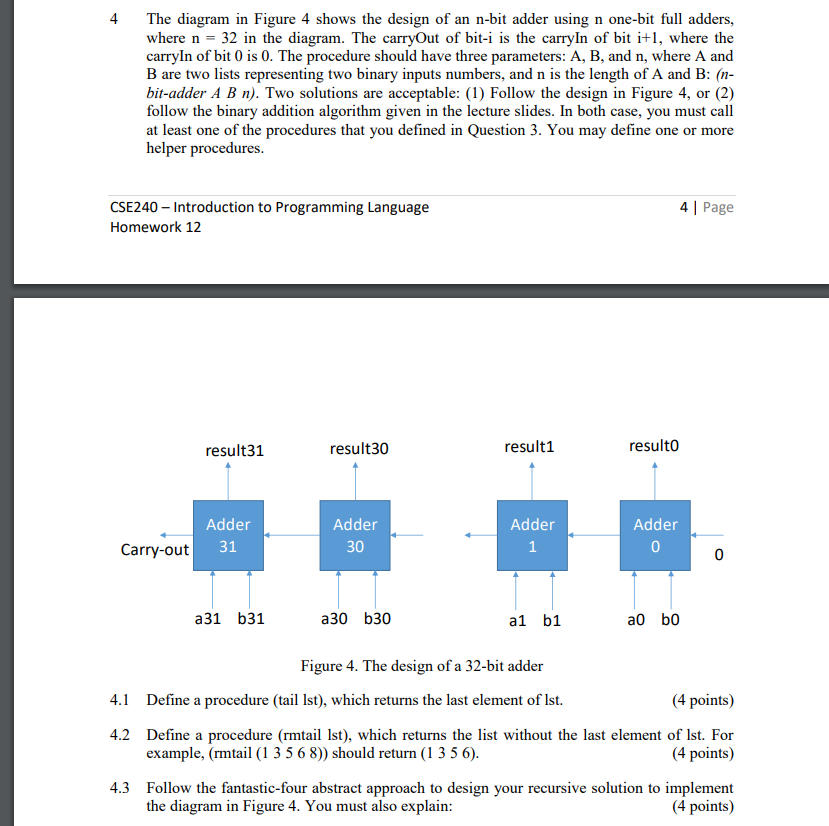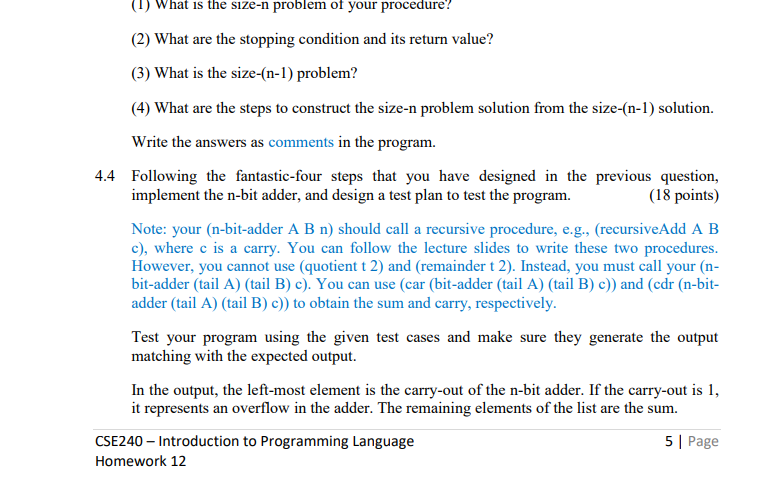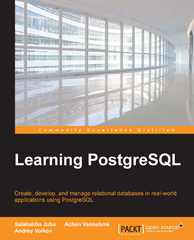

4The diagram in Figure 4 shows the design of an n-bit adder using n one-bit full adders, where n -32 in the diagram. The carryOut of bit-i is the carryIn of bit i+1, where the carryIn of bit 0 is 0. The procedure should have three parameters: A, B, and n, where A and B are two lists representing two binary inputs numbers, and n is the length of A and B: (n- bit-adder A B n). Two solutions are acceptable: (1) Follow the design in Figure 4, or (2) follow the binary addition algorithm given in the lecture slides. In both case, you must call at least one of the procedures that you defined in Question 3. You may define one or more helper procedures 4 | Page CSE240 Introduction to Programming Language Homework 12 result31 result30 result1 result0 Adder Adder 30 Adder Adder 0 Carry-out 0 a31 b31 a30 b30 al b1 a0 b0 Figure 4. The design of a 32-bit adder 4.1 Define a procedure (tail Ist), which returns the last element of lst. (4 points) 4.2 Define a procedure (rmtail Ist), which returns the list without the last element of Ist. For (4 points) example, (rmtail (1 3 5 6 8)) should return (1 3 5 6) 4.3 Follow the fantastic-four abstract approach to design your recursive solution to implement (4 points) the diagram in Figure 4. You must also explain: 4The diagram in Figure 4 shows the design of an n-bit adder using n one-bit full adders, where n -32 in the diagram. The carryOut of bit-i is the carryIn of bit i+1, where the carryIn of bit 0 is 0. The procedure should have three parameters: A, B, and n, where A and B are two lists representing two binary inputs numbers, and n is the length of A and B: (n- bit-adder A B n). Two solutions are acceptable: (1) Follow the design in Figure 4, or (2) follow the binary addition algorithm given in the lecture slides. In both case, you must call at least one of the procedures that you defined in Question 3. You may define one or more helper procedures 4 | Page CSE240 Introduction to Programming Language Homework 12 result31 result30 result1 result0 Adder Adder 30 Adder Adder 0 Carry-out 0 a31 b31 a30 b30 al b1 a0 b0 Figure 4. The design of a 32-bit adder 4.1 Define a procedure (tail Ist), which returns the last element of lst. (4 points) 4.2 Define a procedure (rmtail Ist), which returns the list without the last element of Ist. For (4 points) example, (rmtail (1 3 5 6 8)) should return (1 3 5 6) 4.3 Follow the fantastic-four abstract approach to design your recursive solution to implement (4 points) the diagram in Figure 4. You must also explain








